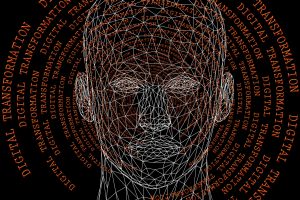
Digital transformation is often perceived through the lens of technology, new systems, innovative tools, and cutting-edge solutions. While these technological advancements are crucial, the true success of a digital transformation project hinges on a factor that often receives less attention: the people side. Integrating the human element into the core of digital transformation efforts can significantly impact the outcome, ensuring that technology serves its intended purpose and delivers value. Additionally, overlooking the people aspect can lead to increased litigation risks, as unmet expectations and perceived failures can escalate into legal challenges.
1. Embracing Change and Overcoming Resistance
One of the primary reasons why the people side should be central to digital transformation is managing change effectively. Digital transformation invariably disrupts existing workflows, processes, and roles, which can lead to resistance among employees. When people are not prepared or engaged, they may resist new systems or processes, leading to lower adoption rates and reduced benefits from the transformation.
To address this, organizations must prioritize change management strategies that involve clear communication, employee training, and support systems. By engaging with employees early in the process and addressing their concerns, organizations can foster a more receptive and adaptive workforce.
2. Enhancing User Experience and Adoption
The success of any new technology is ultimately determined by how well it is adopted and used by its end-users. Technology that is not aligned with the needs and workflows of employees can lead to frustration and underutilization. Therefore, understanding the needs and preferences of the people who will interact with the technology is essential.
Involving users in the design and implementation phases can lead to solutions that are more intuitive and aligned with their daily tasks. User feedback should be an integral part of the development process to ensure that the technology enhances their experience rather than complicates it.
3. Building a Culture of Innovation
Digital transformation is not just about implementing new technology; it’s also about fostering a culture that embraces innovation and continuous improvement. When employees are empowered and able to contribute ideas as part of the requirements gathering process and are encouraged to experiment with new technologies, organizations can create a culture that drives ongoing transformation.
Organizations should focus on building a culture that values creativity and collaboration. This includes providing opportunities for professional development, encouraging knowledge sharing, and recognizing contributions to innovation.
4. Ensuring Effective Training and Support
Even the most advanced technology is only as good as the people who use it. Comprehensive training and support are crucial for ensuring that employees can effectively leverage new tools and systems. Without proper training, employees may struggle to adapt, leading to decreased productivity and potential errors.
Investing in training programs that are tailored to different user needs and providing ongoing support can help bridge the gap between technology and its users. This approach ensures that employees have the skills and confidence to use new systems effectively.
5. Aligning Technology with Organizational Goals
Digital transformation should align with the broader goals and objectives of the organization. The technology itself is just a means to an end, improving processes, enhancing efficiency, and driving business outcomes. The people side of the transformation ensures that these goals are met by aligning technology with the organization’s strategic vision and ensuring that all employees understand how their roles contribute to these objectives.
Involving leadership and key stakeholders in the transformation process helps in aligning technology initiatives with organizational goals and securing buy-in across all levels of the organization.
6. Addressing Skills Gaps and Talent Management
Digital transformation often introduces new skills requirements and changes the nature of work. Addressing skills gaps is a critical aspect of ensuring that employees are equipped to handle new technologies and processes.
Organizations should assess their current skill sets, identify areas where gaps exist, and invest in reskilling and upskilling programs. This not only helps in maximizing the benefits of digital transformation but also supports employee growth and career development.
7. Measuring and Celebrating Success
Finally, focusing on the people side of digital transformation allows organizations to recognize and celebrate successes. Acknowledging the efforts and achievements of employees throughout the transformation journey helps in maintaining motivation and engagement.
Regularly measuring progress and celebrating milestones reinforces the value of the transformation and encourages continued support and enthusiasm from the team.
While technology is a critical component of digital transformation, the people side is equally important and should be a core focus of any transformation project. By addressing change management, enhancing user experience, fostering a culture of innovation, ensuring effective training, aligning technology with organizational goals, managing skills gaps, and celebrating successes, organizations can achieve a more successful and sustainable digital transformation. Prioritizing the human element not only helps in overcoming challenges but also ensures that the technology delivers its full potential and drives meaningful business outcomes.
